Free Landing Page Copy Generator (generates a 1000-word copy)
Please review your answers, then click "Generate".
Who is your target audience?
What problem does your offer / landing page solve?
What's your main call-to-action (CTA)?
What's your unique selling proposition? (optional)
Before we jump into the templates, try my interactive landing page copy generator above.
Just answer a few questions about your business, and it’ll create a customized 1000-word landing page tailored to YOUR needs.
Example:
A software company might input “Project management software” for small marketing teams that eliminates missed deadlines and helps teams finish projects 30% faster. The main CTA is “Start Free Trial” and the unique selling proposition (USP) is “AI-powered task prioritization.”
The landing page. It’s where visitors land, and conversions happen – or don’t.
According to a study by Unbounce, the median landing page conversion rate across industries is just 6.6%, but the best pages convert at 25% or higher.
Why such a big gap? The answer usually comes down to copy-specifically, copy that speaks directly to what your customers actually say, not what you think they want to hear.
Now let’s go over the exact templates, formulas, and examples that will help you create high-converting landing pages.
–
Your Quick-Fix: The Landing Page Problem-Solution Matrix
Below is your go-to matrix for diagnosing and fixing landing page copy problems. Find your issue in the left column and apply the solution template right away.
Problem | Solution Template | Example | How to Implement |
|---|---|---|---|
Unclear value proposition | 3-part value formula | “Save 5 hours weekly with our automated invoice system” | Fill in: [Customer problem] → [Your solution] → [Key benefit] |
Weak headline | Problem-agitation headline | “Tired of losing leads? Your landing page might be the culprit” | Identify customer pain point → agitate it → hint at solution |
Benefit not clear | Feature-to-benefit translator | Feature: “24/7 monitoring” → Benefit: “Sleep soundly knowing your site never goes down” | For each feature, complete: “Which means you can…” |
Lack of trust | Social proof block | “Join 10,000+ businesses who increased conversions by 37%” | Insert specific numbers → relevant customer results |
Ineffective CTA | Action-outcome CTA | “Get Your Template → Start Converting Today” | Use [Action Verb] → [Desirable Outcome] format |
A clear value proposition usually increase conversion rates when properly aligned with what customers actually want.
–
Plug-and-Play Landing Page Copy Template (The MVP Version)
Here’s a complete landing page copy template you can fill in 15 minutes.
This minimum viable template covers all the essential elements without overwhelming you with options.
Before:
“Welcome to ABC Software. We offer cloud solutions for businesses.”
After:
“Stop losing customers to technical issues. ABC Software’s cloud solution prevents 93% of common website crashes, keeping your business open 24/7.”
Full Template Structure:
- Headline: [Pain point] + [Solution] + [Benefit]
- Subheadline: [Expand on benefit] + [Credibility element] + [Overcome objection]
- Opening paragraph: [Agitate problem] + [Hint at solution]
- Key benefits: 3-5 bullet points with [Feature] → [Benefit] format
- Social proof: [Number of customers/users] + [Specific result]
- CTA: [Action verb] + [Desired outcome]
- Risk reverser: [Guarantee] or [No-risk statement]
This template works because it focuses on the customer’s problem first, then presents your solution in terms of benefits, not features.
–
Customer Language Collection Templates
The secret to high-converting copy? Using your customers’ exact words. Here are templates to capture that language:
Customer Interview Script:
“Can you describe the specific problem you were facing before you found our solution? What words would you use to describe how it made you feel? What made you decide to try our [product/service]?”
Review Mining Worksheet:
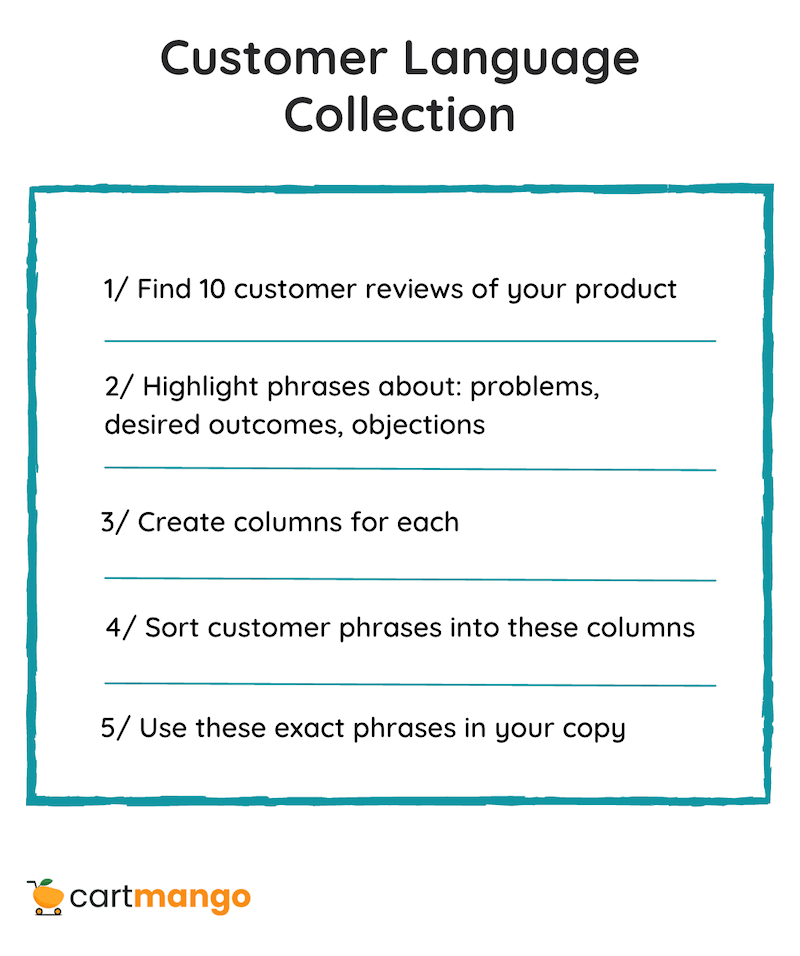
- Find 10+ customer reviews of your product or similar products
- Highlight phrases about: problems, desired outcomes, objections
- Create columns for each
- Sort customer phrases into these columns
- Use these exact phrases in your landing page copy
Example:
A SaaS company found customers repeatedly used the phrase “I was drowning in spreadsheets” in interviews. When they changed their headline from “Streamline Your Workflow” to “Stop Drowning in Spreadsheets,” conversions increased by 27%.
Learn more about voice of customer research from CXL.
–
Problem #1: Unclear Value Proposition
The value proposition is the #1 factor influencing whether visitors will stay or leave your landing page.
Problem:
Visitors don’t understand what you’re offering, who it’s for, or why they should care.
Solution Template:
3-part value proposition formula:
[What you offer] + [Who it’s for] + [Key benefit/outcome]
Generic Example: “We offer email marketing software.”
Template-Based Example: “Email marketing software that helps small business owners double their open rates without hiring a marketing team.”
Implementation Guide:
- List what your product/service actually does in simple terms
- Identify your specific audience segment
- State the #1 outcome your customers want
- Combine these elements in a single, clear statement
Your value proposition should pass the “5-second test” – if someone can’t understand what you offer within 5 seconds, it needs work.
–
Problem #2: Weak Headlines + 15 Headline Solutions
Your headline is the most important piece of copy on your page.
8 out of 10 people will read your headline, but only 2 out of 10 will read the rest. (Source)
Problem:
Headlines don’t grab attention or communicate benefits.

Solution Templates:
5 Problem-Solution Headlines:
1/ “Struggling with [problem]? This [solution] cuts it by [result]”
Example: “Struggling with cart abandonment? This 3-step template cuts it by 31%”
–
2/ “How to [achieve desired outcome] without [common pain point]”
Example: “How to Create Landing Pages that Convert without Hiring a Copywriter”
–
3/ “[Number] Ways to Solve [Common Problem]”
Example: “7 Ways to Solve Your Landing Page Conversion Problems”
–
4/ “Stop [pain point] and Start [desired outcome]”
Example: “Stop Wasting Ad Spend and Start Converting Visitors”
–
5/ “The End of [Problem]: Introducing [Your Solution]”
Example: “The End of Low Conversions: Introducing Our Proven Landing Page Framework”
–
5 Benefit-Driven Headlines:
1/ “[Achieve Result] in [Timeframe] with [Your Product/Service]”
Example: “Double Your Conversion Rate in 30 Days with Our Landing Page Templates”
–
2/ “[Do Desirable Activity] Like [Admired Entity] With [Your Solution]”
Example: “Write Copy Like a Pro With Our Fill-in-the-Blank Templates”
–
3/ “[Number] [Benefit] Secrets for [Target Audience]”
Example: “5 Conversion Secrets for E-commerce Store Owners”
–
4/ “Get [Specific Result] Without [Common Objection/Pain]”
Example: “Get More Leads Without Increasing Your Ad Budget”
–
5/ “[Product Name]: [Primary Benefit] for [Target Audience]”
Example: “LandingCraft: High-Converting Templates for Non-Writers”
–
5 Curiosity Headlines:
1/ “The Counterintuitive [Activity] That [Unexpected Result]”
Example: “The Counterintuitive Landing Page Trick That Doubled Our Conversions”
–
2/ “[Number] Little-Known Ways to [Desirable Outcome]”
Example: “3 Little-Known Ways to Make Your Landing Page Convert”
–
3/ “What [Successful Person/Company] Can Teach You About [Topic]”
Example: “What Apple Can Teach You About Landing Page Design”
–
4/ “The [Adjective] Truth About [Common Belief]”
Example: “The Surprising Truth About Landing Page Length”
–
5/ “Why [Common Tactic] Is Killing Your [Desired Result]”
Example: “Why Your Current Headline Is Killing Your Conversion Rate”
–
Pro Tip:
When selecting a headline template, consider your audience’s awareness level. Problem-solution headlines work best for problem-aware prospects. Benefit headlines work for solution-aware visitors. Curiosity headlines can work for anyone but need strong follow-through.
–
The 60-Second Subheadline Builder
Your subheadline supports your headline and bridges to the main content.
It’s often the deciding factor in whether someone continues reading.
3-Part Formula:
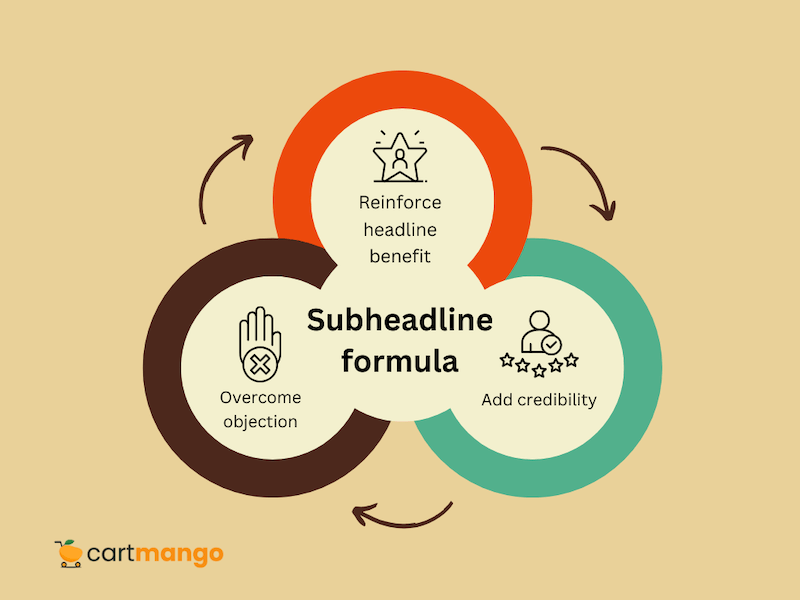
[Reinforce headline benefit] + [Add credibility] + [Overcome objection]
Example: “Cut your landing page creation time in half, just like 2,300+ marketing teams have done, without sacrificing quality or conversions.”
10 Fill-in-the-Blank Templates:
1/ “Join [number] [target audience] who have [achieved result] with [your solution].”
2/ “We help [target audience] [achieve desired outcome] without [common obstacle].”
3/ “[Outcome] in [timeframe], or [risk-free guarantee].”
4/ “The [adjective] way to [solve problem] and [achieve benefit], even if [common objection].”
5/ “No more [pain point]. Just [desired outcome] with our [unique approach].”
6/ “Discover how [target audience] are [achieving result] while [avoiding common problem].”
7/ “The only [product/service] that [unique feature] to help you [desired outcome].”
8/ “Find out why [number] customers choose [your product] to [solve problem].”
9/ “[Key benefit] backed by [proof element] and trusted by [credibility indicator].”
10/ “Finally, a [product/service] that [solves specific problem] without [common drawback].”
The key to a great subheadline is making sure it uses customer language while smoothly connecting your headline to your first content section.
–
Problem #3: Missing or Weak Benefits
One of the most common landing page mistakes is listing features without translating them into benefits.
Feature | Benefit | Customer-Language Version |
|---|---|---|
AI-powered email automation | Save 5 hours per week on email marketing | “No more Sunday nights scheduling emails – the system does it while you sleep” |
99.9% uptime guarantee | Avoid lost sales from site outages | “Your store stays open 24/7, even when you’re not working” |
One-click checkout | Increase conversion rates by reducing friction | “Customers can buy with a single tap – no forms, no frustration” |
Real-time inventory sync | Prevent overselling and customer disappointment | “Never have to email a customer saying ‘Sorry, we’re out of stock'” |
Customizable templates | Create branded materials without a designer | “Make professional-looking emails that match your brand in minutes, not days” |
Implementation Guide:
- List all your product’s features
- For each feature, write “which means you can…”
- Complete the sentence with a direct benefit to the customer
- Rewrite using the exact words your customers use to describe that benefit
By translating features into benefits using customer language, you connect with visitors’ real needs and desires.
–
Problem #4: Lack of Trust Elements
Without trust, visitors won’t convert – no matter how good your offer is.
Problem:
Visitors are skeptical of claims and promises.
Solution Template:
Trust-building copy blocks
Example Trust Block:
“Trusted by 50,000+ businesses including [Logo] [Logo] [Logo]. Our average customer sees a 27% increase in conversion rates within the first 30 days.”
Trust Element Templates:
1/ Numbers-Based Trust: “[Number] [target audience] trust [product name] to [achieve outcome].”
2/ Results-Based Trust: “Our users report [specific result] within [timeframe].”
3/ Social Proof Trust: “Join industry leaders like [recognized names] who use [product] to [benefit].”
4/ Guarantee Trust: “[Timeframe] [type of guarantee] – because we’re confident you’ll [positive outcome].”
5/ Authority Trust: “Recommended by [industry experts/publications] as the [superlative] solution for [problem].”
Trust Element Placement Guide:
- Below the headline: Brief social proof snippet
- Next to the CTA: Guarantee statement
- Below pricing information: Security badges, money-back guarantee
- Throughout the page: Customer testimonials addressing specific pain points
Trust elements should appear at moments of doubt or decision in your visitors’ journey.
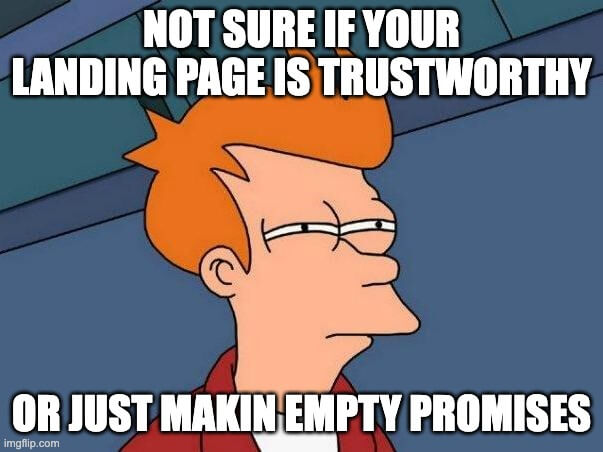
Social Proof Templates That Build Trust
Customer testimonials are one of the most powerful forms of social proof. Here’s how to collect and display them effectively:
Testimonial Request Script:
“Hi [Name], I noticed you’ve been using [Product] for [time period]. Would you be willing to share how it’s helped your business? Specifically, what problem did it solve, what results have you seen, and what would you tell someone considering it?”
3 Testimonial Display Templates:
1/ Before/After Template:
“[Problem before] → [Solution found] → [Results after]”
Example: “Before CartMango, I spent hours managing inventory across multiple channels. Now everything syncs automatically. Our overselling issues have dropped to zero, and customer satisfaction is up 32%.”
–
2/ Objection-Busting Template:
“[Initial skepticism] → [Experience] → [Outcome]”
Example: “I was concerned the system would be too complicated for my team. But the onboarding was surprisingly quick, and everyone picked it up within a day. We’ve already increased our email open rates by 41%.”
–
3/ Results-Focused Template:
“[Specific result] + [Timeframe] + [Additional unexpected benefit]”
Example: “We increased our landing page conversions by 27% within the first month. An unexpected bonus was how much time we saved – creating new pages now takes hours instead of days.”
–
When selecting which testimonials to use, choose ones that address specific objections your visitors might have.
–
Problem #5: Ineffective Calls-to-Action
Your call-to-action (CTA) is where all your persuasion efforts lead. A weak CTA can undermine even the best landing page copy.
Situation | CTA Template | Example |
|---|---|---|
Free lead magnet | Get Your [Resource Type] → [Specific Benefit] | “Get Your Template → Start Converting Today” |
Free trial signup | Start Your [Timeframe] Trial → No Credit Card | “Start Your 14-Day Trial → No Credit Card Needed” |
Demo request | See [Product] in Action → [Specific Benefit] | “See CartMango in Action → Discover How It Works” |
Consultation booking | Book Your [Service Type] → [Timeframe] → [Benefit] | “Book Your Strategy Call → 30 Minutes to Higher Conversions” |
Product purchase | Get [Product] Now → [Guarantee/Risk Reversal] | “Get CartMango Now → 30-Day Money-Back Guarantee” |
The right CTA formula can dramatically impact conversion rates. Simply changing a button from “Order” to “Get” can increase conversion.
Additional CTA Templates:
- Primary CTA formula: [Action Verb] + [Desirable Outcome]
- “Create Your Landing Page”
- “Boost Your Conversion Rate”
- “Eliminate Checkout Abandonment”
- Secondary CTA options: [Low Commitment Alternative]
- “See How It Works”
- “View Success Stories”
- “Learn More First”
Your CTA should complete this sentence for the visitor: “I want to _______.” It should be the logical next step after reading your copy.
–
Problem #6: Poor Objection Handling
Every potential customer has objections. Addressing them directly in your copy can significantly boost conversion rates.
Problem: Visitor concerns aren’t addressed, creating hesitation.
Solution Template: Objection-resolution copy blocks
Formula: [Acknowledge] + [Counter with solution feature] + [Proof point]
Example:
- Objection: “It looks too complicated.”
- Resolution Copy: “Worried about complexity? Our setup wizard takes just 10 minutes to configure. In fact, 92% of our users launch their first landing page without contacting support.”
Common Objections and Templates:
1/ Price Objection:
“Yes, quality solutions require investment. But our customers typically see [specific ROI] within [timeframe], making it a net profit, not an expense.”
2/ Time Objection:
“Short on time? Our [quick-start feature] gets you up and running in just [timeframe]. Most users set everything up in a single lunch break.”
3/ Technical Skill Objection:
“No technical skills needed. Our [feature] was designed for non-technical users, with [simple process] that anyone can follow.”
4/ Trust Objection:
“We back every purchase with a [timeframe] money-back guarantee. Try it risk-free – if you don’t see [specific benefit], we’ll refund every penny.”
5/ Comparison Objection:
“Comparing options? Here’s how we’re different: [unique advantage 1], [unique advantage 2], and [unique advantage 3] that you won’t find elsewhere.”
–
Research your customer’s actual objections through surveys, customer service logs, and sales call notes. Use their exact phrasing when addressing these concerns.
–
Time-Saving Copy Templates For Specific Page Sections
Sometimes you need quick templates for specific sections of your landing page.
Here are some ready-to-use templates for common elements:
Pain Point Paragraph Template:
“You’ve [experienced problem]. It’s [negative emotion] when [specific instance of problem]. Every [consequence of problem] means [negative impact on goals].”
Example: “You’ve spent hours creating landing pages that should convert, but the results are disappointing. It’s frustrating when visitors come, look around, but leave without taking action. Every abandoned page means lost revenue and wasted marketing dollars.”
Solution Introduction Block Template:
“Introducing [product name]: the [product category] that [primary benefit]. Unlike [alternative solutions], [product name] [key differentiator] so you can [desired outcome] without [common pain point].”
Example: “Introducing LandingCraft: the landing page template system that creates high-converting pages in minutes. Unlike generic templates, LandingCraft uses proven psychological triggers so you can maximize conversions without needing copywriting skills.”
Guarantee/Risk Reversal Block Template:
“[Timeframe] [Type of Guarantee]: [Explain terms]. If [condition], [what happens]. We offer this because [confidence reason].”
Example: “30-Day Money-Back Guarantee: Try CartMango risk-free for a full month. If you don’t see an improvement in your conversion rates, we’ll refund your purchase in full. We offer this because we’re confident you’ll see results.”
–
These section templates save you time while making sure you include all the key copy elements that drive conversions.
–
Quick-Start Templates For Common Landing Pages
Different types of landing pages need different approaches.
Here are templates for the most common landing page types:
Lead Magnet Opt-in Page Template:
- Headline: “Get the [Lead Magnet Name] that helped [target audience] achieve [specific result]”
- Subheadline: “Discover how to [achieve desired outcome] without [common obstacle]”
- Body: “Inside this [resource type], you’ll learn:
- How to [benefit 1]
- The secret to [benefit 2]
- A simple way to [benefit 3]
- CTA: “Download Now → Get Instant Access”
- Risk Reverser: “No spam. Unsubscribe anytime.”
Free Trial Sign-Up Page Template:
- Headline: “[Achieve primary benefit] with [Product Name]”
- Subheadline: “Join [number] [target audience] who [achievement]”
- Body: “Start your free [timeframe] trial today:
- No credit card required
- Full access to [key feature 1], [key feature 2], and [key feature 3]
- [Specific result] in just [timeframe]
- CTA: “Start Your Free Trial → No Credit Card Needed”
- Risk Reverser: “No obligation. Cancel anytime.”
Product Sales Page Template:
- Headline: “[Solve Problem] with [Product Name]”
- Subheadline: “The [adjective] way to [achieve outcome] without [pain point]”
- Pain Point Section: “[Describe problem and consequences]”
- Solution Section: “How [Product Name] works:”
- Social Proof: “[Customer results and testimonials]”
- Pricing Section: “[Pricing details with value justification]”
- CTA: “Get [Product Name] → [Benefit Reminder]”
- Guarantee: “[Risk reversal guarantee details]”
Consultation Booking Template:
- Headline: “Book Your [Consultation Type] and [Primary Benefit]”
- Subheadline: “A [timeframe] call to help you [achieve specific outcome]”
- Body: “What you’ll get from this call:
- [Outcome 1]
- [Outcome 2]
- [Outcome 3]
- About Expert Section: “[Credentials and quick bio]”
- CTA: “Book Your Call → [Timeframe] to [Benefit]”
- Trust Element: “[Number] clients helped” or “[Result] typical outcome”
–
The “Message Match” Template System
Message match is the consistency between what brought visitors to your landing page and what they find when they arrive. Proper message match are likely to increase conversions.
Ad-to-Landing Page Match Template:
- Ad Headline: “[Key Benefit/Promise]”
- Landing Page Headline: “[Same Key Benefit/Promise]” + [Supporting Detail]
- First Paragraph: Opens with same terminology and pain points from the ad
Example:
- Ad Headline: “Reduce Shopping Cart Abandonment by 35%”
- Landing Page Headline: “Reduce Shopping Cart Abandonment by 35% With Our Proven 3-Step System”
- First Paragraph: “Shopping cart abandonment is costing e-commerce stores billions annually. Our system helps you capture those lost sales with three simple changes to your checkout process.”
Message Match Checklist:
- Visual consistency (colors, images, logos)
- Headline reflects ad copy or referring link text
- Same terminology and keywords throughout
- Consistent offer and value proposition
- Related imagery that matches expectations
When you maintain message match, visitors immediately know they’re in the right place, reducing bounce rates and increasing conversion probability.
–
30-Minute Template Customization Process
Once you have your basic template, here’s how to customize it for your specific business in just 30 minutes:
Step 1: Customer Language Adaptation (10 minutes)
- Review customer reviews, support tickets, and testimonials
- Identify patterns in how customers describe their:
- Problems and pain points
- Desired outcomes
- Objections and concerns
- Replace template language with these exact phrases
Step 2: Industry-Specific Adjustments (10 minutes)
B2B Adjustments:
- Original: “Get more customers with our easy-to-use tool”
- B2B Version: “Increase qualified lead generation by 43% with our enterprise-grade platform”
- Focus on: ROI, implementation time, team adoption, integration capabilities
B2C Adjustments:
- Focus on: Emotional benefits, ease of use, immediate gratification, social proof
- Emphasize how the product makes the customer feel or look to others
Service Business Adjustments:
- Highlight: Expertise, process, outcomes, testimonials from similar clients
- Show clear before/after scenarios
Step 3: Awareness Level Modifications (10 minutes)
- Problem-Aware: Focus more on problem agitation and how your solution works
- Solution-Aware: Focus more on why your solution is better than alternatives
- Product-Aware: Focus on special offers, guarantees, and risk reversers
This customization process ensures your template feels tailored to your specific audience and offering without requiring hours of work.
–
Speed-Writing Templates When You’re Stuck
When you need to write landing page copy fast, these templates help you break through writer’s block:
Value Proposition Formula:
“We help [target audience] [achieve desired outcome] by [your unique mechanism] without [common pain point].”
Examples:
- “We help e-commerce store owners increase sales by optimizing checkout pages without expensive redesigns.”
- “We help busy professionals stay organized by automating task management without complex software.”
- “We help small business owners get more clients by simplifying their marketing without hiring an agency.”
- “We help content creators grow their audience by optimizing content distribution without spending more time.”
- “We help job seekers land interviews by crafting standout resumes without professional writing experience.”
Problem Statement Templates:
“[Target audience] waste/lose/struggle with [pain point], costing them [specific negative consequence].”
Examples:
- “E-commerce store owners waste hours manually updating inventory, costing them missed sales and customer complaints.”
- “Marketing teams struggle with inconsistent landing pages, costing them thousands in wasted ad spend.”
- “Small business owners lose potential customers with confusing websites, costing them revenue and growth opportunities.”
- “Freelancers waste hours on administrative tasks, costing them billable time and income.”
- “Online course creators struggle with low completion rates, costing them referrals and reputation.”
Solution Description Templates:
“Our [product/service] [primary function] through [key mechanism], helping you [primary benefit] and [secondary benefit].”
Examples:
- “Our template system streamlines landing page creation through proven formulas, helping you increase conversions and save time.”
- “Our checkout optimization tool identifies abandonment causes through behavioral analysis, helping you recover lost sales and improve customer experience.”
- “Our email automation platform personalizes communication through AI-powered segmentation, helping you increase engagement and drive more sales.”
- “Our analytics dashboard simplifies data through visual reports, helping you make better decisions and spot opportunities faster.”
- “Our project management tool organizes tasks through intuitive workflows, helping you meet deadlines and reduce team stress.”
These templates provide clear structures to follow when you need to write something quickly but effectively.
–
The 5-Minute Landing Page Copy Audit Tool
Before launching your landing page, run it through this quick audit to catch common conversion killers:
Element to Check | Problem Indicators | Quick Fix |
|---|---|---|
Headline | Generic, company-focused, no clear benefit | Apply problem-solution formula with customer language |
Value Proposition | Unclear what you do, for whom, and why it matters | Use 3-part formula: [What] → [For Whom] → [Key Benefit] |
Benefits | Features only, technical jargon, no customer outcomes | Transform each feature using “which means you can…” |
Social Proof | Missing, generic, or irrelevant to main offer | Add specific results-focused testimonial using template |
Call-to-Action | Generic “Submit” or “Click Here” buttons | Replace with action-outcome formula from CTA table |
Objection Handling | Common customer concerns not addressed | Add FAQ section using objection-resolution template |
Mobile Optimization | Text too long, CTAs too small on mobile | Apply mobile-specific templates for headlines and CTAs |
This audit process takes just minutes but can greatly improve your conversion rates by identifying the most common copy issues.
–
Mobile-Specific Problem-Solution Templates
With over 50% of web traffic coming from mobile devices, your landing page copy needs to work well on small screens.
Mobile Headline Character Count Template:
- Desktop headline (max 70 characters)
- Mobile headline (max 40 characters)
Example:
- Original (68 chars): “Transform Your Business With Our Revolutionary Marketing Platform”
- Mobile (35 chars): “Double Your Leads in 30 Days”
Mobile CTA Solutions:
- Make buttons full-width on mobile
- Use shorter CTA text (max 20 characters)
- Place primary CTA above the fold
- Repeat CTA throughout long mobile pages
Example Mobile CTAs:
- “Start Free Trial” instead of “Start Your Free 14-Day Trial”
- “Get Template” instead of “Download Your Template Now”
Mobile Layout Copy Adjustments:
- Front-load key information in first 2 sentences
- Use bullet points instead of paragraphs where possible
- Break long sections into expandable accordions
- Make phone numbers tap-to-call
- Reduce form fields to absolute minimum
Mobile users have less patience and smaller screens. Your copy must adapt accordingly or risk losing more than half your potential conversions.
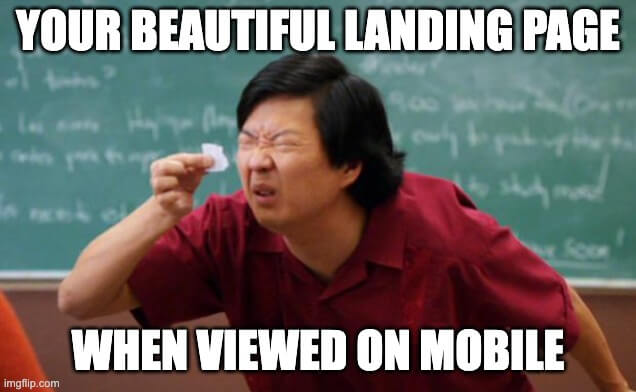
–
Minimum Viable Testing Plan
You don’t need complex A/B testing to improve your landing page. Start with these two high-impact elements:
1. Headline Testing:
- Original: “Professional Marketing Templates”
- Test Version: “Double Your Conversion Rate with Proven Templates”
- Implementation: Create two versions of your page with different headlines
- Measure: Which version gets more form submissions or button clicks
2. CTA Testing:
- Original: “Submit”
- Test Version: “Get Your Template → Start Converting Today”
- Implementation: Change only the button text, keep everything else identical
- Measure: Which version gets more clicks
Simple A/B Testing Process:
- Identify one element to test (headline or CTA first)
- Create two versions (A and B)
- Split your traffic between them
- Run until you have at least 100 conversions total
- Implement the winner and move to the next test
You don’t need fancy tools to start. Many platforms like Unbounce, Instapage, or even Google Optimize offer free or low-cost A/B testing capabilities.
–
Non-Writer’s Problem-Solution Guide
Not a writer? No problem. These fill-in-the-blank templates require zero writing skill:
Fill-in-the-Blank Headline Template:
“Tired of [pain point]? Our [product/service] helps you [achieve desired outcome] without [common obstacle].”
Example Completed:
“Tired of unpredictable cash flow? Our invoice management system helps you get paid on time without awkward payment reminders.”
Simple Fixes Anyone Can Implement:
- Replace “we” statements with “you” statements
- Before: “We offer the best templates”
- After: “You get high-converting templates”
- Add numbers wherever possible
- Before: “Save time with our tool”
- After: “Save 5 hours per week with our tool”
- Turn features into benefits using this format:
- “[Feature], which means you can [benefit]”
- Example: “One-click publishing, which means you can launch campaigns in minutes instead of hours”
- Use this testimonial request email template:
- “Hi [Name], What’s the biggest benefit you’ve experienced since using [Product]? Would you mind if I shared your response on our website? Thanks! [Your Name]”
Quick-Win Suggestions:
- Add “without [common pain point]” to your headline
- Change all button text from generic terms to specific actions
- Add one specific number to quantify your main benefit
- Include a simple guarantee statement near your CTA
- Add “even if [common objection]” to your subheadline
These simple changes can dramatically improve conversion rates even if you have no copywriting experience.
–
Problem-Solution Matrix for Different Traffic Sources
Different traffic sources mean visitors have different expectations.
Here’s how to adjust your templates:
Paid Traffic Landing Page Templates:
- Headline Formula: “[Ad Keyword Phrase] + [Specific Benefit] + [Timeframe/Ease]”
- Example: “Landing Page Templates That Double Conversions in 7 Days”
- Key Focus: Maintain message match with ad copy
- First Paragraph: Directly reference what was promised in the ad
- Trust Elements: Place high in the page to justify ad click
Social Media Traffic Templates:
- Headline Formula: “[Emotional Hook] + [Solution] + [Social Proof]”
- Example: “Stop Wasting Time on Landing Pages That Don’t Convert – Join 5,000+ Marketers Using Our Proven System”
- Key Focus: Connect emotional appeal from social post to landing page
- Visual Consistency: Use same images/videos from social posts
- Trust Elements: Emphasize user testimonials and community
Email Traffic Templates:
- Headline Formula: “[Personalization] + [Specific Promise from Email]”
- Example: “John, Here’s Your Custom Landing Page Template as Promised”
- Key Focus: Deliver on specific promise made in email
- First Paragraph: Acknowledge where they came from (“Thanks for your interest in…”)
- CTA: Lower-commitment options since email traffic is often warmer
By matching your landing page to the traffic source, you create a smoother transition for visitors, increasing the likelihood they’ll convert.
–
Creating a High Performing Landing Page: What Works
You want a great landing page? Start with your target customer. Before you put words on the page, picture the only person you need to convince.
Your strong headline must grab attention fast. Make it tell visitors what your product or service solves for them. Your sub headline should explain how your service works in simple terms.
For the main body copy:
- Use short sentences
- Show what features provide to users
- Craft persuasive copy that answers questions
- Challenge the status quo of existing solutions
Beyond Design: What Makes Pages Convert
Many landing pages look pretty but fail to perform. A true high performing landing page needs more than design.
Add search engine optimization to bring more visitors to your page naturally. Your compelling landing should:
- Guide visitors clearly toward one action
- Collect email sign ups without confusion
- Match the promise made in your ads
- Maintain consistent messaging throughout
Learn from real life examples of successful marketing campaigns. Study what makes an effective landing page work in your industry.
Final Checks for Your Page
Review your entire landing to make sure it connects to your broader content marketing plan. Can you explain your offer in an elevator pitch?
Need more tips? Try a free template as your starting point (which is why this post exists). The best landing pages show how features provide real solutions.
Your closing section should remind visitors why your solution beats the current status quo.
–
TL;DR For Your Landing Page Copywriting Template
Creating high-converting landing page copy doesn’t have to be complicated. With these templates, you can transform your landing pages today, not someday.
Start with the Problem-Solution Matrix to identify your biggest landing page issues.
Apply the relevant template. Test the results.
The difference in your conversion rates might surprise you.
The best landing page copy isn’t about clever wordplay – it’s about using your customers’ language to show how you solve their problems.
Ready to put these templates into action? Start with just one section of your landing page. Apply a template from this guide. See how it performs. Then move on to the next section.
Related
- Sellfy vs Payhip: The Recurring Revenue Prison (2026)
- Podia vs Gumroad: The Recurring Revenue Handcuffs (2026)
- SendOwl vs Gumroad: The Recurring Revenue Black Hole (2026)
- Gumroad vs Sellfy: The Vendor Lock-in Cage (2025)
- Gumroad vs Payhip: The Hidden Trap for Creators (2025)
- ThriveCart vs SamCart – The Subscription Hostage Trap (2025)
- 8 ThriveCart Alternatives & The Lifetime Pricing Paradox (2025)
- 8 SamCart alternatives + Subscription hostage (2025)
- The GENTLE Method: Soft marketing for creators
- How Far in Advance Should You Promote a Webinar?
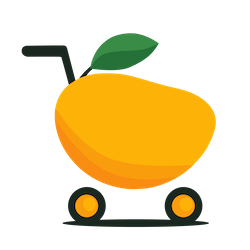
 Do NOT refresh this page. It takes a few moments to generate your request.
Do NOT refresh this page. It takes a few moments to generate your request.